
Kailash Manasarovar Aerial Darshan at Just @ Rs 35,000 Reserve Your Seat Now! Click Here
Home to more than 1.4 billion people fostering under the largest democracy on the earth, India represents a nation that has civilization as old as the very first ‘sense of existence’ a human had ever experienced or dreamt of. The country among the leading precursors of knowledge and learning had the earliest words of wisdom composed in Vedic Sanskrit text known to be as Vedas. The veracity and great assimilation power to transform all of its invaders and immerse them into her influence has sustained the oldest civilization to develop into a most versatile country that has 438 living languages and a great number of religions, faith and believes that co-exist with each other despite their differences with each one’s own sanctity, individuality and freedom.
However, a crowded nation, India with a very wider spectrum of culture, languages, flora and fauna, history, geography offers a collage of humanity, with an inevitable impression of satisfaction and fulfilment as trailed through a complete story of man from birth to nirvana. A blend of contemporary with traditional as represented by modern cities and an extensive rural landscape, India is a spot for a stirring and treasured journey. India is one of the most popular and most visited tourist destinations of the world which has touring options for all reason and every season.
Your may also like to read : North India, South India, Central India, North East India, West India, East India, States of India, Cities of India, Ancient India, Medieval India, Modern India
Visit the fantastic cities while on the tour of the Golden Triangle with the Taj Mahal at Sunrise. Get the best services, lodging, and more with Max Holidays.
This golden triangle with hot air balloon tour is an adventurous trip for all our adventure seekers. Get a peek into Rajasthan's culture-only Max Holidays.
Explore amazing temples and shrines of Tamilnadu, engage yourself in epic journey to the backwaters of Kerala and...
Nature has blessed India with different types of terrains, weather conditions and incredible fauna and flora...
Experience the royal heritage and cultural charm of India with Rajasthan Legacy Tour. Stay in beautiful palaces and enjoy a camel safari amidst sand dunes.
Himachal Pradesh is India's Himalayan beauty in its purest form. Located in north-western India...
India’s development from an ancient civilization to a modern country with inherent characteristics of assimilation and tolerance to a greater extent has been attributed due to its geographical location and features that led her to inculcate into a civilization with a versatility and vibrancy. The seventh largest country of the world by area, India is located north of equator between 8°4' and 37°6' north latitude and 68°7' and 97°25' east longitude. The country has an extensive boundary of about 15, 200 Kilometres with its neighbours and an extensive coastline of about 7, 517 kilometres.
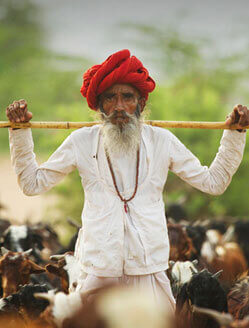
The land of diverse culture is a place that keeps mesmerizing people from all over. Each and every region of India has something unique to offer its customers coming from around the world. The people, their culture, customs, languages, appearances, complexions, etc, differ from one place to another and that difference is very much visible in its surroundings. The reason behind so much variance is its varied topography, which dramatically differs from place to place. The topography of India plays a major role in giving a distinct look to its every nook and corner, which is also found in the costumes and cuisine of its people. India’s Huge Malls & Urban Life also divided into various social subsections - that depends both on caste background and economic background. Both caste and financial background plays a significant role in making of the society in India. It wouldn't be surprising if you find both the riches and the under privileged people walking side by side on the same street and finding a palatial home and a slum on either side of the same road.
One can easily find the difference between the urban life style and the rural life style in India. On one hand where the urban people are too modern and westernized, on the other hand the rural people are too conservative and superstitious. Finding multiplexes and high-techbuildings with to-the-minute amenities is not a new thing in etropolises, while the small cities are not far behind in the process of development. In contrast to this, the villages are far behind in the development & modernising process. However, here lies the essence of India, as on your tour to India you will get everything of your choice, be it a high-tech ambience or a cool & easy going environment. At present, the cities of India are in the process of huge transformation, which is why you might not come across the real taste of India here, whereas, villages still carry the real image of India, where you can see, hear and taste the real India.
Altogether, the reasons could be innumerable and unimaginable, but Wildlife tours India will never resist from offering diverse sights, smells and sounds throughout your journey. Right from the northern Himalayas to the southern India Ocean, Western desert to extreme eastern tropical rain forests, India is just incredible. The diverse topograhy of India gives an immense opportunity to indulge in various types of activities, besides just sightseeing. The tourist can involve themselves in adventure sports tours, Ayurveda & Spa tours, Nature tours, Wildlife tours, and much more.
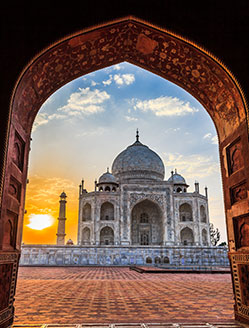
Witness one of the oldest river valley civilizations, the past of India dates back to ancient times as early as 3300 BC, where it was found existing in excavations of town and city system of Indus valley. A systematic drainage system and interiors of the home found at the excavations of Mohenjo-Daro and Harappa are evidence to much advanced society at that time similar to modern townships which were inhabited by Aryans who even pushed earlier settlers to down south; those even founded Dravidian culture in India.
The successive period of calm and prosperity runs till 8th century. During that period India saw birth and proliferation of Buddhism and Jainism under Mauryan and Gupta Empire. The period has also seen a great architectural construction across India as many great temples were made during that period. The invention of zero, game of chess and many astronomical inventions were made during that time. By reaching the 8th century, the period of calmness turned into turbulence when lured by wealth and massive natural resource the Turk invaders began plundering of its wealth and peace. In 1192, when a Turk invader Muhammad Ghori defeated a brave Indian Rajput ruler, Prithviraj Chauhan in the battle of Terrain and made his deputy Qutub Ud Din Aibek (the founder Qutub Minar) the in-charge of the Indian Territory, the period of medieval Indian history began. In the first battle of Panipat in 1526, the defeat of Ibrahim Lodi by the hands of Babar led to the foundation of Mughal Dynasty. The Dynasty further successively ruled by Humayun, Akbar, Jahagir and Shah Jahan paved the path for an era where art, culture and architecture flourished to a greater heights. This period saw the construction of some of the world renowned marvel of architectures in India including the Taj Mahal, Red Fort, Jama Masjid, Fatehpur Sikri, Agra Fort and others.
Modern period of Indian history begins with discovery of sea route to India by Vasco da Gama, a European explorer in 1498 and further conquest and colonization of India by British, French, Dutch and Portuguese companies. The India came completely under British subjugation in 1857, when first rebellion against Britain was crushed; however, India attained full freedom on 15th August, 1947. The period of British rule in India introduced the country with advance principal of sciences, new political system and democracy. After independence, India adopted democratic parliamentary system and is now administered by an elected government. At present, India is known to be as the fastest growing economy counted in BRIC nations and is among the 10 largest economies, GDP wise. India is also an IT (Information Technology) power house.
[Read in depth : Ancient India, Medieval India, Modern India ]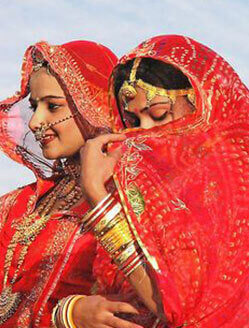
People of different religious faiths and belief speaks different languages living in different parts of the country, yet entwined with their traditional values and patriarchy system best describes the Indian culture. Birth place and nurturing ground of faith on Hinduism, Buddhism, Sikhism, Jainism, Islam and others, religion plays an important role in lives of Indians as a place of worship and devotion can be found across the length and breadth of entire India.
Thus this multi-layered culture wrapped in spiritual theme dominates Indian milieu to a greater extent ranging from music, art, literature, cuisines, clothing, architecture and every other aspect of living. Traditionally, an agricultural country, village plays an important role in Indian society thus causing folk dance and music to be important part of folk life during special occasions and celebrations.
Indian food rich in oil has ample spices for flavour and taste offering extraordinary range of culinary diversity. The fiery taste of Indian food coming from extensive use of green and red chilly powder is worth to taste once.
The modern face of India is its youth, the third generation of country after the Independence, the youngest nation in the world and a larger proportion of Indian demography that is educated, tech savvy works in big metros of India in leading corporate and financial institutions of the world. They frequently visit eating joints restaurant chains, boutiques and clubs and have all the latest technical wizards in their possession.
[Read in depth : Cultural Heritage of India ]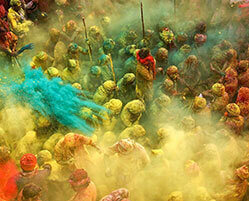
A home to enormous population practicing various religions and faith, festivities and celebrations is an affair that remains trendy throughout the year. With so much of faith and cultures co-existing with each other, every month there is a big occasion for rejoicing for everyone in India. Some of the most popular festivals and fairs in India are Holi, Diwali, Dusshera, Id, Christmas Day, Pushkar Animal Fair, Suraj Kund Fair, Kumb Mela and others. The national festivals of India include Republic Day (26th January), Independence Day (15th August) and Gandhi Jayanti (2nd October)
[Read in depth : Fair & Festivals of India ]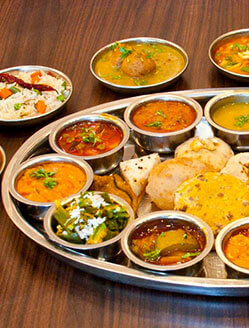
Counted among one of the best cuisines of the world, you will find Indian food to be hot and spicy. The savoury taste of Indian cuisines comes from the liberal use of various spices and green or red chillies powder. However, the use of spices in Indian cuisines varies from region to region. The food from Andhra is the most hot and spicy whereas you will find Gujarati cuisines to be gentle in taste. If you wish to taste Indian food, it is good to start with lesser spicy food. After some time you will get use to Indian spicy food.
Indian food is primarily divided into two parts owing to cereals grown there. North Indian food being bread based due to cultivation of wheat is consisted of primarily Punjabi and Mughlai food. Mughlai cuisines mostly non-vegetarian have Afghani, Arabic and Turkish preparation methods. Contrary to north Indian food, the cuisines of South India are rice based. A typical South Indian meal includes sambhar (a thick vegetable and lentil chowder) with rice, rasam (a thin, peppery soup), or avial (mixed vegetables) with rice, traditionally served on a banana leaf as a plate. Likewise, every region of India has something special to offer for your culinary desires.
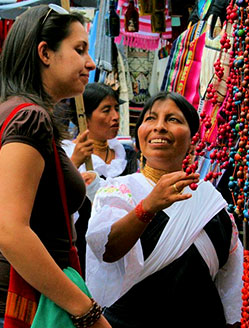
Shopping in India offers a unique selling experience and exposure for tourists from all across the globe as they will enjoy doing hard bargaining while buying from street hawkers. However, with rising levels of foreign investments in India, you can now easily find retail chain stores across the country from Big Metros to small towns. For a quality shopping you can prefer government cottage emporiums. You can do a lot of shopping on your way to India, however, it is preferred to buy wood carvings, clothing, painting, marble and stone carvings and jewellery. Leading brands like Louis Vuitton, Prada, Gucci, Zara, A & F and others are there available in upmarket stores as well.
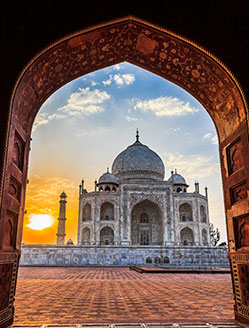
In India, both GSM and CDMA services are widely offered with starting credit of Rs 120 and Rs 90 credits on the SIM. 3G/4G services are widely available in India. Major telephone operators in India Major telephone operators & mobile services across India includes Airtel, Vodafone, BSNL, MTNL, Reliance Mobile (both GSM and CDMA), TATA DOCOMO (GSM), TATA Indicom(CDMA), Idea Cellular, Uninor, Aircel , MTS(CDMA) and Videocon Mobile.
Internet cafes can be found anywhere in India as they charge as low as 10-20 Rs per hour. The most common internet kiosks in India are Reliance World and Sify iWay. Wi-Fi penetration in India has yet to make its mark in India , though major airports and rail stations offer paid Wi-Fi on hourly basis. Delhi, Bangalore, Pune and Mumbai are the only cities in India with sound wi-fi coverage. 3G/4G datacards/USB modems are rather more popular in India.
On entering in India, you generally have to get yourself adjusted to a new climate, weather and food hence prompting you to be prone to mild fever at the start of the journey. It is always advisable to get your body to be relaxed for a day or one to acclimatize to the country before starting the journey. While eating, enjoy spicy food, cautiously, if it is not your regular diet.
Tap water is generally not advisable for safe drinking in India. However, at different organizations you can find filters/ purifiers installed and water to be safe for drinking. Adequately sealed packaged drinking water is a safer option of drinking water in India. Bisleri and Kinley are among the best drinking water brands in India. Peeled fruits as apples and bananas and packaged snacks are always good option to eat in India.
230V/50Hz, Indian (Old British) and European plugs
The currency of India is rupee or INR (Indian National Rupee). A rupee is further divided into 100 paisa. The common bills in India come in denominations of 5, 10, 20, 50, 100, 500 and 2,000 rupees. It is always advisable to keep bills of small denominations when shopping in India; otherwise, it may create a problem of exchange.
Tipping is not mandatory in India, however, it is considered being as a humane to give 5 -10% of the service as a token of appreciation to low wage earning serving persons as porters, drivers, restaurant and other staff.
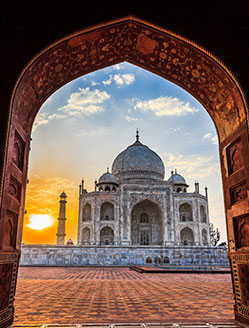
India is multilingual nation as you will find entirely different languages spoken by people of each state in the country. Hindi is spoken by 40% of Indian population and English is also used by educated class. It is used as language of formal communication among people. In addition to Hindi and English India has other 21 official languages including Punjabi, Bengali, Marathi, Tamil, Kannada, etc.
India’s position in tropical zone causes months of heat and monsoon followed by cool months between September-March is the best period of year to visit India. This is the best part of the year when after the intensive rainfall, the entire country gets covered in green foliage. Period between May to August of humid and hot is the most suitable time to visit the Ladkah Region.
According to your reason for visiting India you can get visa for different durations.
Electronic Visa, An online E-tourist Visa facility has been started from 27 November 2014. Under this visa you get a single entry to the airports in Bangalore, Chennai, Cochin, Delhi, Goa, Hyderabad, Kolkata, Mumbai, and Trivandrum within 30 days of issuance. To be issued four days in advance before journey, the E-Tourist Visa costing USD60 (paid online) allows a person to stay in India not more than 30 days. Citizens from following countries are eligible for Electronic Visa:-
Albania, Andorra, Anguilla, Antigua & Barbuda, Argentina, Armenia, Aruba, Australia, Austria, Bahamas, Barbados, Belgium, Belize, Bolivia, Bosnia & Herzegovina, Botswana, Brazil, Brunei, Bulgaria, Cambodia, Canada, Cape Verde, Cayman Island, Chile, China, China- SAR Hongkong, China- SAR Macau, Colombia, Comoros, Cook Islands, Costa Rica, Cote d'lvoire, Croatia, Cuba, Czech Republic, Denmark, Djibouti, Dominica, Dominican Republic, East Timor, Ecuador, El Salvador, Eritrea, Estonia, Fiji, Finland, France, Gabon, Gambia, Georgia, Germany, Ghana, Greece, Grenada, Guatemala, Guinea, Guyana, Haiti, Honduras, Hungary, Iceland, Indonesia, Ireland, Israel, Jamaica, Japan, Jordan, Kenya, Kiribati, Laos, Latvia, Lesotho, Liberia, Liechtenstein, Lithuania, Luxembourg, Madagascar, Malawi, Malaysia, Malta, Marshall Islands, Mauritius, Mexico, Micronesia, Moldova, Monaco, Mongolia, Montenegro, Montserrat, Mozambique, Myanmar, Namibia, Nauru, Netherlands, New Zealand, Nicaragua, Niue Island, Norway, Oman, Palau, Palestine, Panama, Papua New Guinea, Paraguay, Peru, Philippines, Poland, Portugal, Republic of Korea, Republic of Macedonia, Romania, Russia, Saint Christopher and Nevis, Saint Lucia, Saint Vincent & the Grenadines, Samoa, San Marino, Senegal, Serbia, Seychelles, Singapore, Slovakia, Slovenia, Solomon Islands, South Africa, Spain, Sri Lanka, Suriname, Swaziland, Sweden, Switzerland, Taiwan, Tajikistan, Tanzania, Thailand, Tonga, Trinidad & Tobago, Turks & Caicos Island, Tuvalu, UAE, Ukraine, United Kingdom, Uruguay, USA, Vanuatu, Vatican City-Holy See, Venezuela, Vietnam, Zambia and Zimbabwe.
[Find Indian Embassies and High Commissions near you ] [List of Airports in India]
With an extensive network of road, railways and airlines, it has become very easy to reach India and even commute across the farthest corner and region of the country. Mumbai, Kolkata, Delhi and Chennai are major international airports that operate regular flight to major cities of the world. Another important entry point to reach India in recent time has been developed as Bengaluru, Hyderabad and Kochi.
Indian Railways at present is one of the largest railway networks of the world and offers a great opportunity to learn about Indian landscape and natural beauty at first hand. It is one of the safest methods to travel in India in a cost effective manner. For travelling by road you can choose from the variable options as interstate bus services, car rental and other important options.
[Car and Coach Rental India]
The unique geographical position of India lying in tropical zone and surrounded by Himalayan Range in the north leads to primarily three seasons in India including summer, rain and winter. The temperature goes as high as 45 degree Celsius in summer and as low as zero degree Celsius in harsh winter conditions. The Himalayan Mountains experience moderate to heavy snowfall in winters.
According to the reputation of India, the option to stay here varies in different price segments. You can get rooms here according to your budget starting as cheapest from Rs. 450 per night to expensive luxury five-star hotel suites. Apart from that to avail excitement of a unique staying experience in India you can book yourself a room according to your need at hotels, resorts, and heritage hotel sites. Rural homestay is another novel concept of homestay emerging here where a tourist stays with a host in his home in the countryside.
[ COVID 19 Update in India : Updates by the Centre Govt , Ministry of Tourism Advisory , Ministry of Health & Family Walfare ]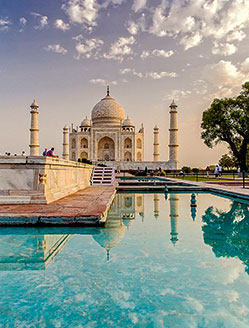
Formidable forts and palaces, memorials of India’s legacy against a backdrop of modernity and history, is what north India holds on a platter for every tourist. On a second note, there is much more, like innumerable destinations to explore for nature lover, highly revered religious places, perfect terrains for adventure lovers and more. Picturesque mountains, lush green valleys, mighty rivers and adventurous places that will rush your adrenaline is an ingredient in this region's diverse beauty. Colorful Punjab & Rajasthan, serene Himachal...
North India Tour Packages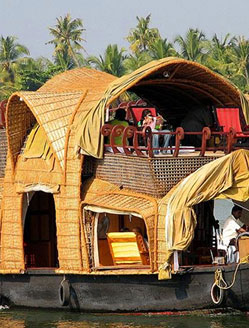
Brightly decorated temples, women draped in sarees & flowers in their hair, hot steaming food served on banana leaf, fresh coconut water by the beach, palm fringed beaches, culture deep rooted in day to day lifestyle… Yes, it is indeed South India. Andhra Pradesh, Karnataka, Kerala, Tamil Nadu and Telangana states as well as the union territories of Andaman and Nicobar, Lakshadweep and Pudducherry form Southern India. Temples, beaches, backwaters, wild life, spice plantations, art & culture, hill stations, and lip-smacking cuisine is on a...
South India Tour Packages.jpg)
Home of the heroes of India, Western India is the land of Chhatrapati Shivaji Maharaj, Sri DhyandevTukaram, Mahatma Gandhi and many others. It is states of Gujarat, Maharashtra and Goa, along with the Union territory of Daman & Diu and Dadra & Nagar Haveli that form western India. As different the names are so is their culture, heritage, history and lifestyle. Woven by the western ghat mountain range this region is blessed with stupendous flora and fauna. Western India is a delight for tourists owing to its contrasting...
Western India Tour Packages
As the name suggest, Central India covers those Indian states that are strategically placed in the centre of the country. It is Madhya Pradesh and Chhattisgarh states that for the central zone. A land of diversity these states take pride in their green environs, wildlife, heritage sites, ancient temples and tribes. These states have been well visited by tourists interested in Indian heritage, Temple Architecture, Indian Wild Life and Buddhism. If you have never experienced this colour of India, it’s time for you to plan an excursion to...
Central India Tour Packages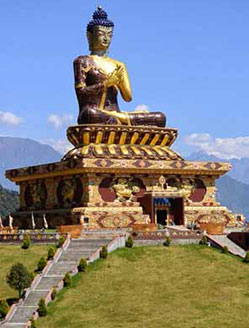
North East India is exotic, fascinating and captivating. If you love amazing natural beauty, simplicity in life, warmth in people and spice in food, visiting North East India is a must for you. Popularly known as The Seven Sisters (Arunachal Pradesh, Assam, Manipur, Meghalaya, Mizoram, Nagaland, and Tripura) and the Himalayan state of Sikkim form North East India and if you wish to enjoy an unexplored and serene holiday, pack your bags soon! Bestowed with mesmerizing natural beauty these states are culturally...
East and North East Tour PackagesPut us on work to plan your next travel. Send your details to our experts now to get a free travel plan with quote